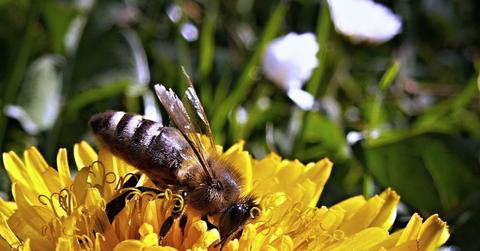5 Easy Ways To Create A Garden That Gives Back To The Planet
Curious about how to make a garden part of your home? Here are all the things you can do in your own garden and yard to save the planet—whether it's a few plants on a fire escape, or a landscape that would rival something in a magazine.
Updated May 26 2019, 4:02 p.m. ET
We all know plants turn carbon dioxide into oxygen, but the trees, shrubs, and plants we put in our yards can do so much more, like provide food and shelter to all kinds of wildlife, pollinators, birds, and insects. Here are all the things you can do in your own garden and yard to save the planet—whether it's a few plants on a fire escape, or a landscape that would rival anything in Better Homes and Gardens.
Consider getting rid of your lawn.
Lawns are meccas for toxic fertilizers, absolute water hogs, and deserts where very few things can grow and survive. In fact, an average backyard requires more than 10,000 gallons of water every single week. And who wants to spend the equivalent of a full week mowing their lawn each year?
Instead of having the lawn you’ve got, shrink it down. Plant some fruit trees, invest in some perennial hedges, or start a great big wildflower garden, using native plants, of course.
Ditch the invasives.
It’s practically impossible these days to look out at a yard and not spy some invasive species. Purple loose strife, English ivy, Japanese honeysuckle—any of these plants can destroy natural habitats, screw up forests, or even damage your local water supply.
Native plants are evolutionary marvels and benefit their surroundings in ways you just can’t get with invasives. A quick cursory Google search will tell you exactly what plants are native in your region. Plant varieties that don’t require much watering, and you’ll be doing a big part to improve the soil, air, and biodiversity where you live.
Plant with the bees in mind.
There are around 150 crops in the United States that depend on pollinators for survival, including apples, almonds, blueberries, melons, and pumpkins. So do us all a favor and plant things on your own property that bring on the butterflies and bees.
Even if you plant just one milkweed plant on your fire escape, you’ll be among the helpers. If you want some more ideas, keep in mind that flowers with flat or shallow bottoms are very attractive to pollinators like bees. Also hop over to the Xerces Society’s website, where the organization offers free .pdf files for each state on pollinator-friendly plants.
Get something together for the birds.
Getting rid of invasive plants is good for more than the natives. In fact, it’s an act that does wonders for birds. Many birds local to your area are particular about their nesting and lodging habits, and just about all of them prefer living and raising their young in native species of hedge and tree.
In the fall, be sure you leave grasses and seed heads out and available for birds to eat. And definitely check out the Audubon Society’s Native Plant Finder to find just the right blend of plants to put in the ground and attract all kinds of cool birds to your backyard.
Only irrigate with what comes out of the sky.
Native plants are going to work best with your climate, but when it’s dry, you still need to irrigate. It’s incredibly easy to put together a rainwater catchment system that can take care of watering your plants when necessary.
A DIY rainwater catchment system requires only a few basic materials and a roofline that’s gravity-fed (no electricity required) and takes just minutes to install.
